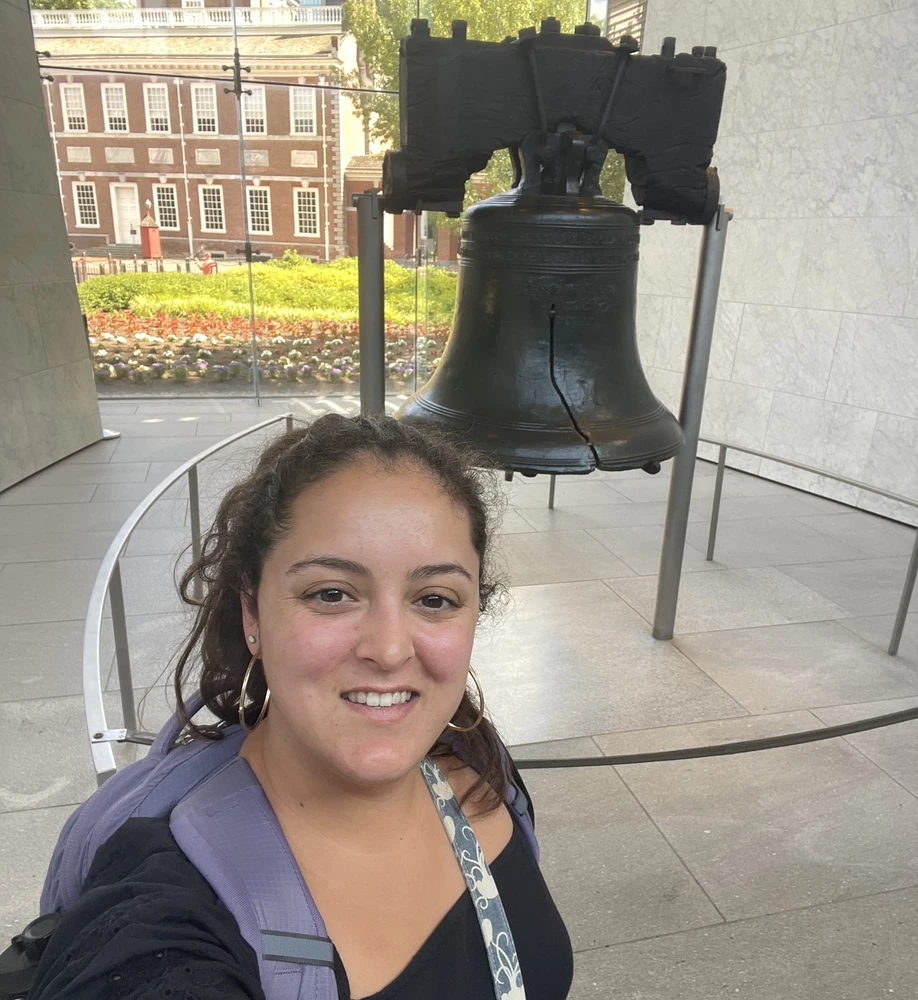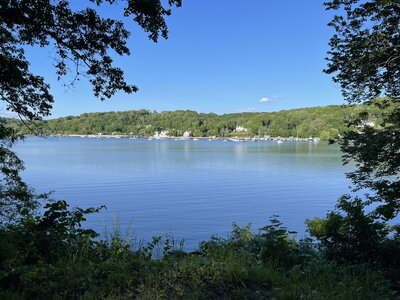
In the summer of 2024, graduate student Grace Maria Eberhardt traveled to the Cold Spring Harbor Laboratory in Long Island and the American Philosophical Society archive in Pennsylvania. She was one of the recipients of the 2024 William and Virginia Waterman Scholarship which, in addition to a grant from the Cold Spring Harbor Laboratory, helped fund her trip. Read about her journey in the latest installment of Notes from the Field.
A Trip to the East Coast: Following the Trail of the Eugenics Record Office
As a historian, my visit to Cold Spring Harbor Laboratory (CSHL) in Long Island may seem unusual, since the lab is known for hosting meetings and classes on cutting-edge biological research. Every summer, the CSHL campus fills up as biologists from all over the United States and abroad come to learn more about cancer, cellular biology, epigenetics and genomics, neuroscience, genetics, and immunology. Originally a site for ecological research, this beach-side campus was long home to James Watson, one of the scientists who discovered the double-helix structure of DNA, and has been an important biological research institution since 1890.
Perhaps the only history-researcher on the campus during my stay, I came to CSHL to visit the site of the former Eugenics Records Office (ERO), which operated from 1910-1940, and examine the archives. Thus, this visit was more than an archive trip. I was able to walk the same paths and sit in the same places as some of the historic actors I study, such as Charles Davenport (1866-1944) and Harry Laughlin (1880-1943), some of the most prominent eugenics promoters of the 20th century. My long days in the archives reading scientific publications and correspondence, were broken up by occasional breaks to look out to the water. One afternoon while I scanned documents, a group of scientists burst into the reading room, sodas in hand, pointing at the bust of a famous scientist they struggled to recall. Despite the campus’ rich history, which is made apparent by the many buildings that memorialize famous biologists, it was clear that scientists treated these namesakes as idols rather than complex, and at times, problematic figures.
130 miles South-West of Long Island was the destination of my next archive, the American Philosophical Society (APS) in Philadelphia. The APS archive is nestled between the Second Bank of the United States and Thomas Jefferson Garden, and only a short walk away from the Liberty Bell. The APS reading room is a replica of Benjamin Franklin’s reading quarters and, unlike the quaint archives at CSHL, the APS holds a huge archival collection, including papers by some of the leading American scientists of the last two centuries. During my short visit, I was able to closely examine collections of the Eugenics Records Office, the American Eugenic Society, and Charles Davenport, and to browse the papers of geneticists Herbert Spencer Jennings, Sewall Wright, and Theodosius Dobzhansky. I felt my questions about how U.S. eugenicists and bureaucrats racially constructed and classified Latinos in the early twentieth century, as well as eugenicists’ complicated views about “mixed-race” and “hybrid” individuals, could easily be answered in the vastness of these collections.

At the APS, I was lucky enough to have an archivist take me into the collections themselves—an area usually off-limits to the public. We grabbed as many boxes as we could carry from the ERO collections, precariously balancing boxes on-top of another. Some boxes were seldom viewed by researchers because they contained mysterious numbers and names with no obvious references. It turned out, though, that I was able to partially decode these records. The ERO had a “trait book” that listed various heritable human traits such as eye color, disease, and even race. Each trait was associated with an array of numbers roughly organized by the Dewey decimal system. Using the trait book, I was able to search for certain “traits,” or in my case, specific “races” by geographic region. Within the last fifteen minutes of my archive trip, I made an unexpected discovery: I realized I had been exclusively looking at trait numbers corresponding to South and Central America, and to my surprise I realized that many Latinos (e.g., Cubans and Puerto Ricans) were actually being classified as “Spanish,” a subcategory of “Caucasian.”
I scurried through the box of notecards to confirm this classification was not a fluke, and it became clear to me that my work here was far from over. It had just begun: now I needed to know why eugenicists had such a difficult time with the “racial” characteristics of Latin Americans. With still so many questions left unanswered, and boxes left un-opened, I now know that I have many more exciting hours ahead in my archival journey.